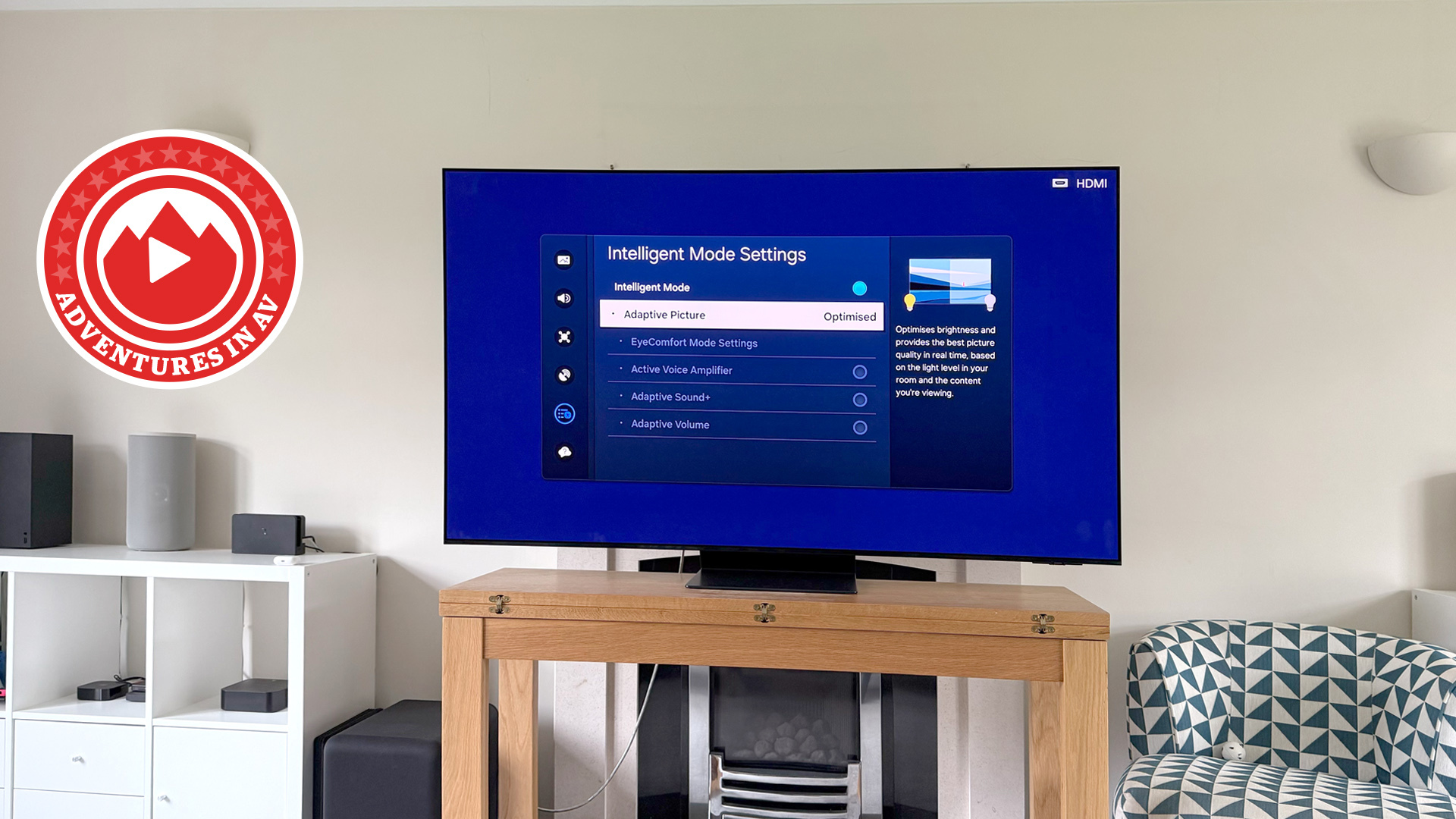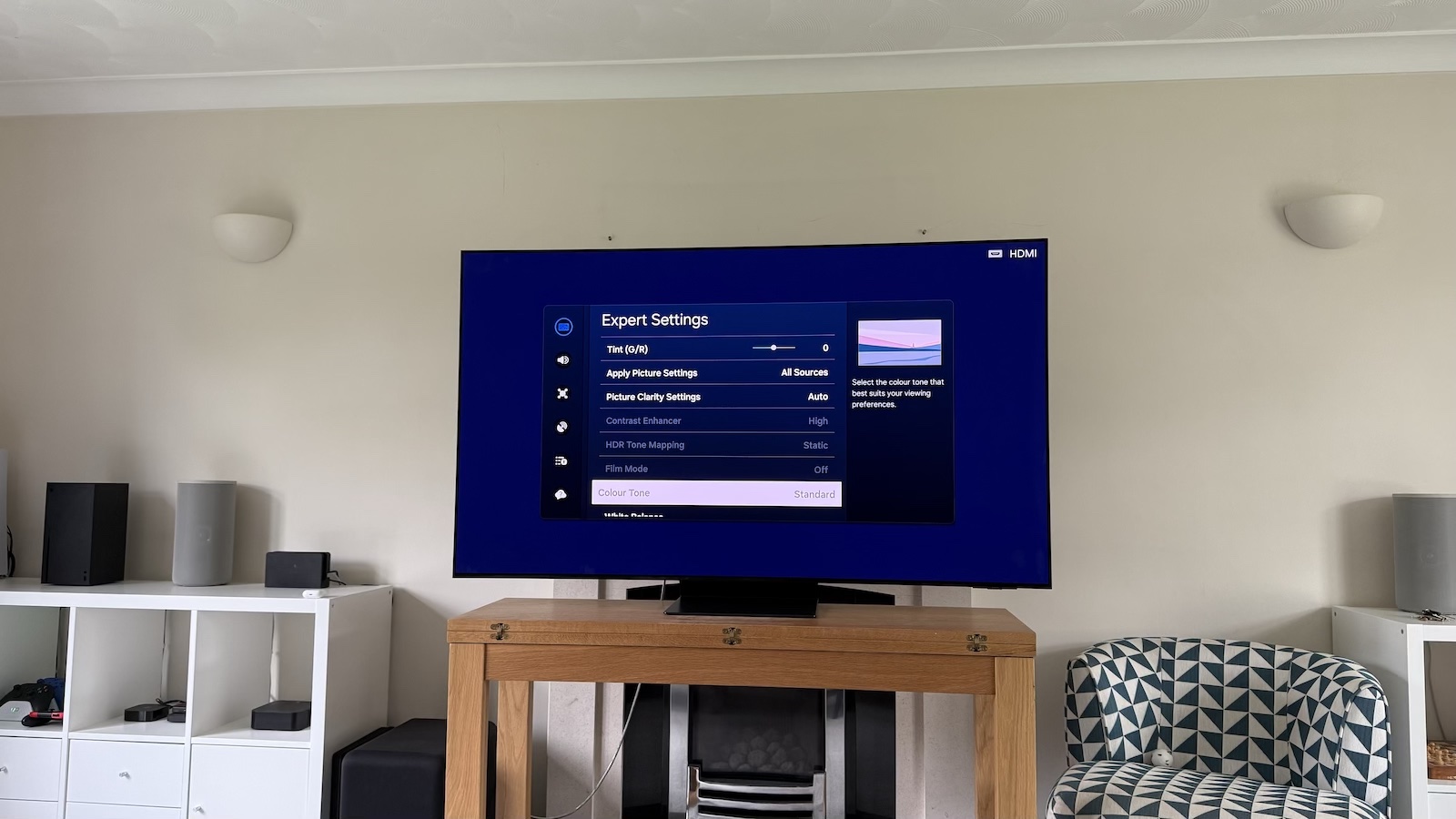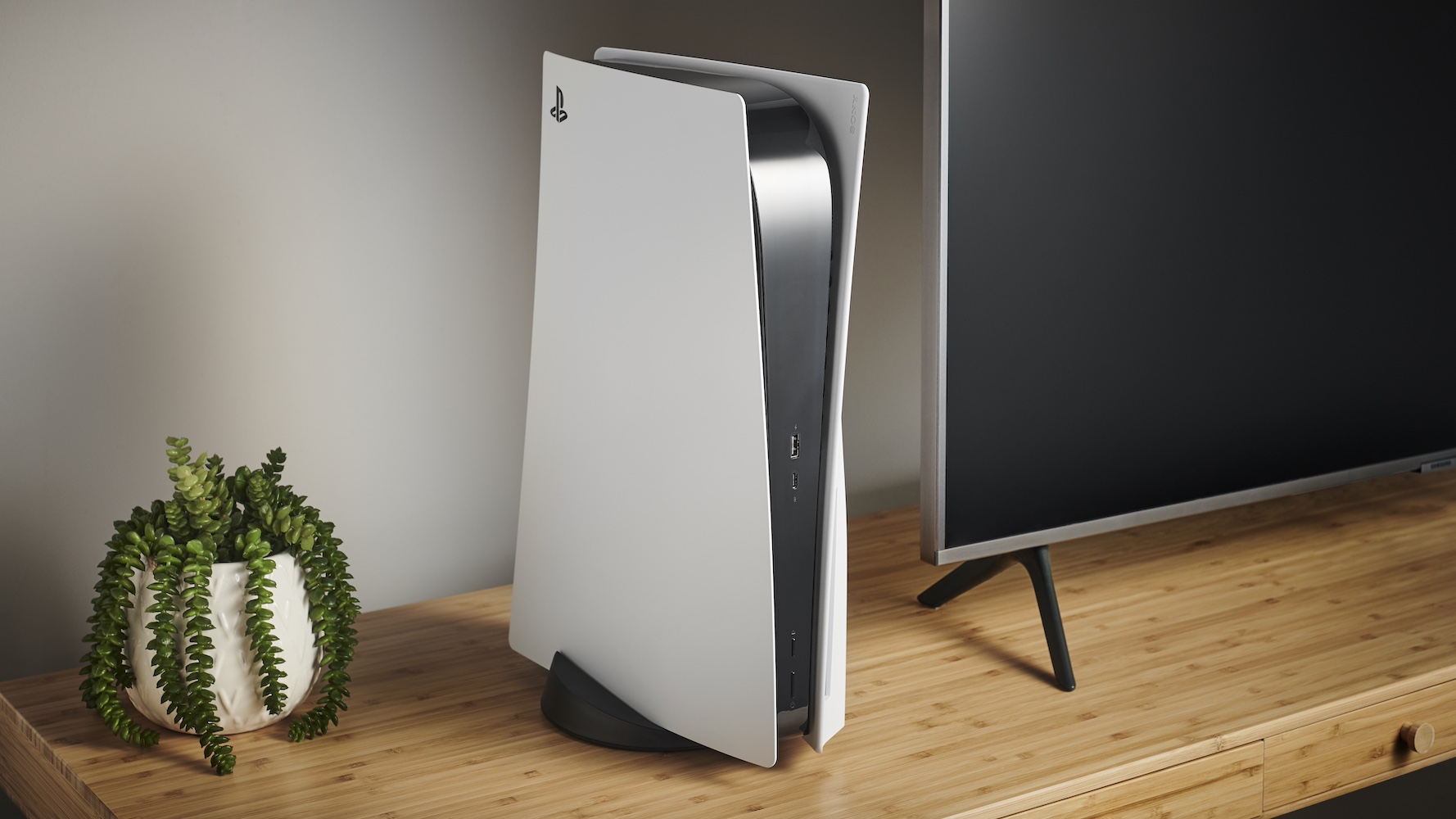I swapped a Panasonic OLED for a Samsung QD-OLED, and I massively miss this specific feature
The Samsung S95C doesn't make life easier for you in the same way a Panasonic OLED does

For the last year or so, I've been using a Panasonic LZ1500 OLED as my living room TV, and I've absolutely loved it. It delivers such balanced, authentic picture quality across all sources – even games – and it offers loads of opportunities for tweaking while also being very set-and-forget once you've found what works for you.
However, it was time for a change. Why? Well, partly because after a little while I always end up feeling the familiar itch to try something new, partly because the Panasonic having just two HDMI 2.1 inputs was causing the occasional frustration, and partly because I've never lived with a QD-OLED, despite having reviewed several of them in our test rooms.
Mostly, though, the change was forced by a desire to reduce cable clutter in the living room. As I've mentioned in this column before, when we moved to our new house (which really isn't that new anymore), I promised not to turn the living room into a cinema. Having AV kit in there is fine (we all enjoy movies and games in Dolby Atmos and on a big screen), but it needs to be neat and tidy, and the four HDMIs plus power cable running from our media unit to the Panasonic TV simply weren't passing muster. We plan to wall-mount the TV, too, at which point any cables running to it will be even more obvious.
Of course, there is the option to route all of the cables through the wall, and perhaps one day that's what we'll do, but that sort of thing involves power tools, plastering and painting, and I don't frankly have the appetite for any more of that in my life right now.
So, instead, I have swapped that Panasonic OLED for a Samsung S95C QD-OLED that has a One Connect box into which all inputs (including power) are fed, with just one, silver cable running between it and the display. It's not quite as neat as hiding all of the cables entirely, but it's a really lovely compromise.
Now, the switch has taken more getting used to than I had anticipated. Samsung and Panasonic have very different ways of doing things and arguably very different picture quality philosophies, but I am now broadly used to the S95C's approach and it's an upgrade in a number of ways, most obviously the brightness and vibrancy of its HDR performance. I miss a fair few things about the Panasonic, though – in particular, and quite surprisingly, its ambient light sensor.
You see, you can set up a TV to look just right in a pitch-black room, but as soon as you open the curtains or turn on the lights, it will look dull and lacking shadow detail. Ambient light sensors, which are present on lots of TVs from lots of brands, are designed to address this, and the Panasonic's is supremely effective.
Get the What Hi-Fi? Newsletter
The latest hi-fi, home cinema and tech news, reviews, buying advice and deals, direct to your inbox.
Essentially, you can set the Panasonic to Filmmaker Mode and get a really accurate picture that's close to perfect in a dark room. If you then switch on the Auto Brightness and Auto Colour settings, it will automatically adjust the picture to compensate for the brightness and colour of the ambient light in the room when you do open the curtains or switch on the lights. It does this without you even noticing – it just looks as the Filmmaker Mode should – and, crucially, it does nothing to the picture when you plunge the room into darkness again. You get a consistent, at least perceptually accurate picture in all lighting conditions with basically no effort. I love it.
The Samsung doesn't work in the same way – but there is a manual workaround

The Samsung S95C does not work in the same way. It does have a Brightness Optimisation setting, but it basically works the opposite way to the Panasonic features I've outlined, in that it's designed to save power, which it primarily does by reducing the brightness of the image to a degree that makes it dull. Really, the Samsung's equivalent of what the Panasonic does is its AI-powered Adaptive Picture feature which, in Samsung's own words, 'optimises brightness and provides the best picture quality in real time, based on the light level in your room and the content you're viewing'.
The first problem with this is that I only want the TV to adapt to the light in the room, not the content that's playing. The bigger problem, though, is that this essentially acts as its own preset, overwriting all of your chosen picture settings and even making most of them unchangeable. One of those unchangeable settings is Colour Tone, which it sets to Standard, giving the whole picture a cool, blue, decidedly uncinematic appearance. So, rather than adapting your selected, cinematically authentic mode to ambient lighting conditions, it ruins the picture and then adapts that to the room lighting.
The solution? Well, I've just given up on any automatic compensation for ambient lighting conditions and, like many owners of the S95C, have customised two of the presets so that they're very similar (very little active processing, no sharpness enhancement, a warm colour temperature etc) but with one brighter than the other. I then switch between them depending on whether we're watching in a light or dark room.
That's hardly the sort of issue that will have me writing to my local MP, of course, but it is a little bit annoying – particularly as I've seen how automatic this stuff can be. This solution lacks the granularity of the Panasonic's, too, in that it's just set for a bright room or a dark room and nothing in between.
It's also worth noting that picture settings for gaming are handled separately and need to be done individually for each input, so as well as the two movie presets (which do, mercifully, copy across inputs) I've also had to create three separate presets (two for SDR and one for HDR) for each of the two HDMI inputs I use for gaming. That was a fun night for me and my family, as I'm sure you can imagine.
Of course, now that's all done and I've got used to the S95C's various idiosyncracies, I can now bask in its crisp, contrasty and colourful images. Tonight's viewing is Alien: Romulus, which I've seen before and is horrible in all of the best ways. I just need to remember that if I get too scared in a pitch-black room and need to turn the lights on, I change my picture preset, too. I'm sure that won't break the tension at all.
MORE:
The S95C's replacement is better in several ways – check out our Samsung S95D review
Here's our QD-OLED vs MLA comparison
These are the best TVs you can buy right now
Tom Parsons has been writing about TV, AV and hi-fi products (not to mention plenty of other 'gadgets' and even cars) for over 15 years. He began his career as What Hi-Fi?'s Staff Writer and is now the TV and AV Editor. In between, he worked as Reviews Editor and then Deputy Editor at Stuff, and over the years has had his work featured in publications such as T3, The Telegraph and Louder. He's also appeared on BBC News, BBC World Service, BBC Radio 4 and Sky Swipe. In his spare time Tom is a runner and gamer.
-
simontompkins Hi Tom,Reply
Thanks ever so much for the article. The Samsung is on my list for next potential TV so it's really good to hear of ways it could be set up to get the best out of it.
In terms of the missing ambilight, I get migraines and I was finding watching a TV in a totally dark room could triggers migraines. From the (little) reading I did I think it's because my brain doesn't deal with the border between the TV screen's light and the rest of the room being black.
Like you, there are times when it's really nice to have a dark room and especially when friends come round as they can't see anything so I am forced (hopefully not too begrudgingly, although I do feel want to say as one does on a car journey "could not have gone before we started")
So, I got myself a wifi light bulb for the living room - only for the living room - I don't need it anywhere else. It's bloomin' great. Truth be told I really didn't get it for me, I got it for my late puss, having it controllable by wifi meant I didn't have to disturb Charlie's restful slumber.
Best part of the wifi bulb is I got a multi colour one - infinitely better than plain white. The best colour on the bulb is blue - when you watch a film it feels the same as seeing a film in pitch black but you can see everything in the room - so you (or guests) can get up and not bump into stuff. It's got the aded bonus of not feeling like you've broken the 'spell' of the movie.
Just a final note. In terms of migraine and headache suffers - everyone is different and so although the blue light hasn't triggered migraines for me if anyone is a suffer be mindful that blue light could be as bad as watching the set in the dark. Also, there is quite a lot of stuff about the negative effects of blue light, especially blue light in the evening - so my best guess is to use blue light shows for movie not and not too regularly and if you use it a lot and find yourself not being able to sleep properly or waking up feeling tired - it may be over use of the blue light.

